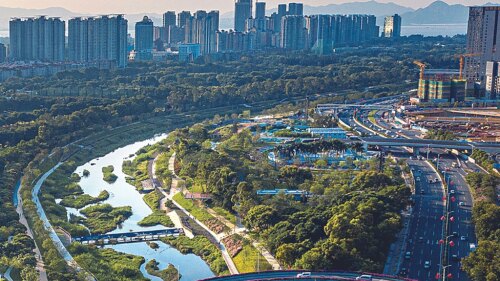Panelists at the ULI Japan Conference in Tokyo said that even a mature market such as Japan offers significant opportunities, due to a program of public/private partnerships designed to ease the burden on the state.
Hajir Naghdy, senior managing director, Macquarie Group, head of Macquarie Capital, Asia and the Middle East, said there is a desire from investors to allocate capital to infrastructure and a need for infrastructure in both developed and developing nations.
Nonetheless, a $1 trillion “infrastructure gap” exists worldwide, with supply not meeting demand, even though infrastructure funds have $100 billion of dry powder, Naghdy said. “That seems hard to reconcile; how can you have so much dry powder and still not enough infrastructure?” he asked. “The problem is that there are not enough investable opportunities.”
Naghdy suggested that more “real estate–oriented infrastructure development” needs to occur following the example of organizations such as MTR Corporation in Hong Kong, which develops mixed-use real estate over transport nodes as well as building Hong Kong’s subway system. It has been so successful that it has exported its skills to Mainland China, where it is developing a number of projects. A real estate development element could help infrastructure projects offer better returns.
“There needs to be more cross-fertilization between real estate professionals and infrastructure professionals. Infrastructure investors tend to be afraid of taking real estate risk, and I think that real estate guys could help them embrace that real estate risk.”
Japan will be “a very exciting infrastructure investment market going forward,” Naghdy said. “It is a large economy with a lot of debt and lots of state-owned infrastructure.” So far, the Japanese government has begun to privatize airports and will see its first privatized toll road this year. The government is also looking to increase the supply of renewable energy to 24 percent of the total from around 10 percent today.
Technological advances are having a great influence on infrastructure, he said, particularly robotics and the internet of things. “These are potentially revolutionary,” he said. “In the renewables space, we had sensors fitted to the vanes on wind farms, allowing [for] real-time adjustment, and this improved top-line performance by 15 percent.”
Naghdy rounded off his talk by warning the audience not to read too much into the falling price of solar energy. “The world population is predicted to grow to 9 billion from 7 billion by 2040,” he said. “And energy use will increase dramatically in developing nations. This means fossil fuels and nuclear remain in the mix for the next 20 years as well as renewables.”




